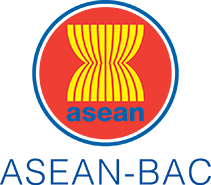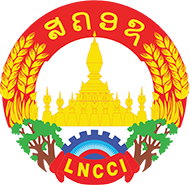summary
March 24th 2021
5th Webinar: The background, significance, implications and future prospects of the RCEP from the viewpoint of evolving regional economic architecture

Agenda
1. Keynote speech from METI
2. Panel discussion between ASEAN Secretariat, Waseda University, ERIA and CSIS
Speaker
-
Dr. Tamura Aki
Director-General for Trade Policy, Ministry of Economy, Trade and Industry (METI), Japan -
Ms. Anna Robeniol
Director, Market Integration Directorate, the ASEAN Secretariat -
Dr. Urata Shujiro
Professor Emeritus, Waseda University -
Mr. Salvador Buban
Policy Fellow, Economic Research Institute for ASEAN and East Asia (ERIA) -
Dr. Yose Rizal Damuri
Head of the Department of Economics, Center for Strategic and International Studies (CSIS), Indonesia
Moderator
-
Ms. Ayumi Kalthida Tada
Director of Public Relations, AMEICC Secretariat
Webinar Summary
(Keynote Speech)
Dr. Tamura shared his experiences in the negotiation phase toward the signing of the RCEP Agreement in November 2020 and the result that the RCEP will bring. The RCEP agreement is one of the world’s largest EPA that consists of 15 countries; 10 ASEAN member states, China, Republic of Korea, Japan, Australia and New Zealand and accounts for about 30% of the global GDP.
The RCEP is a trade deal that further promotes trade and investment in the region. In the event of COVID-19 pandemic, the RCEP also serves as a signal to the world that the RCEP countries are committed to supporting open markets and promoting trade cooperation. Although India did not participate in the signing of the Agreement, the 15 RCEP Signatory States have confirmed that the RCEP remains open to India. Japan hopes that the RCEP would continue to develop as a regional platform through solid implementation and steady improvement of the agreement with ‘ASEAN centrality’ being the foundation of the system. Japan will continue to actively cooperate with ASEAN and other RCEP Participating Countries (RPCs) in that direction.
(Panel Discussion)
At first, all of 4 panelists, Ms. Anna from ASEC, Dr. Urata from Waseda University, Mr. Buban from ERIA and Dr. Damuri from CSIS, introduced their expertise and experiences related to the RCEP and provided comments on Dr. Tamura’s Keynote Speech respectively, followed by the discussion below on three main topics.
The 1st topic was “Background and development of the RCEP negotiations”. Ms. Anna explained the history of the RCEP negotiations by highlighting ASEAN’s leadership, Japan and Australia’s contribution toward the launch of the negotiations, and ASEAN Foreign Partners’ (AFPs) contributions in pushing the bar to a higher level. After that, Dr. Damuri mentioned the notion of ‘ASEAN Centrality’ will play an important role in the implementation of RCEP, and how the RCEP would be directed for the economic integration in the Asia Pacific. Regarding the role Japan played in the RCEP negotiations, Dr. Urata pointed out that East Asia framework jointly proposed by China and Japan was a starting point of the RCEP, and Japan’s action toward TPP may have prompted the RCEP negotiation process. Lastly, Mr. Buban shared two key aspects of the academic contribution of ERIA in relation to RCEP, 1) research such as the comprehensive mapping of FTAs and ASEAN Plus One FTAs in terms of global value chains, and 2) technical support to the Chair in the RCEP negotiations.
The 2nd topic was “Significance of the RCEP Agreement”. Ms. Anna emphasized that the RCEP is not only a significant Agreement that provides key benefits to the ASEAN Member States with the trade facilitation chapters beyond WTO but also an Agreement that has shown the region’s biggest contribution on regional effort for the recovery of post pandemic. In relation to Japan, Dr. Urata said that the RCEP established rule-based, good faith and open trade system in Asia region including China and Republic of Korea. Also, he introduced a recent estimate by the Japanese government that the RCEP could increase Japan’s GDP by 2.7%. Then Dr. Damuri further underlined that the RCEP will bring more than just economic benefits but it also highlights the importance of inclusive integrations. In comparison to other FTAs, Mr. Buban pointed out that the RCEP has several provisions that are not present in other FTAs such as e-commerce, government procurement, and competition. He was of the view that consolidating the rules of origin in ASEAN is also significant contribution of the RCEP.
The 3rd topic was “Implications and future prospects of the RCEP”. Dr. Damuri identified two main trends, 1) the rearrangement of supply chains, and 2) the growing importance of digital economy. He also pointed out the necessity for the RCEP to consider addressing 21st century issues such as cross border e-commerce, and expansion of its memberships. Dr. Urata agreed with Dr. Damuri’s view with the hope that Japan and ASEAN could formulate a strategy to take a leadership role in expanding frameworks such as the RCEP, CPTPP and Free and Open Indo-Pacific to other regions including Europe. Then, Mr. Buban further stated that ERIA would look into impact assessment of the RCEP and the built-in agenda with its continued technical support, research and analysis, and capacity building especially to CLM. Last but not least, Ms. Anna reiterated the significance of the renewed ASEAN and Japan 10 years Strategic Economic Cooperation Roadmap and Japan’s proposal to start a conversation on pathways towards decarbonization and the green recovery. She believes that, with both the RCEP and AJCEP, ASEAN and Japan can deepen and broaden economic relations.
Lastly, all of the panelists expressed their expectation for ASEAN-Japan cooperation regarding the RCEP Agreement and confirmed the importance of ASEAN for Japan as a trading and investment partner, and vice-versa.
Keynote Speech
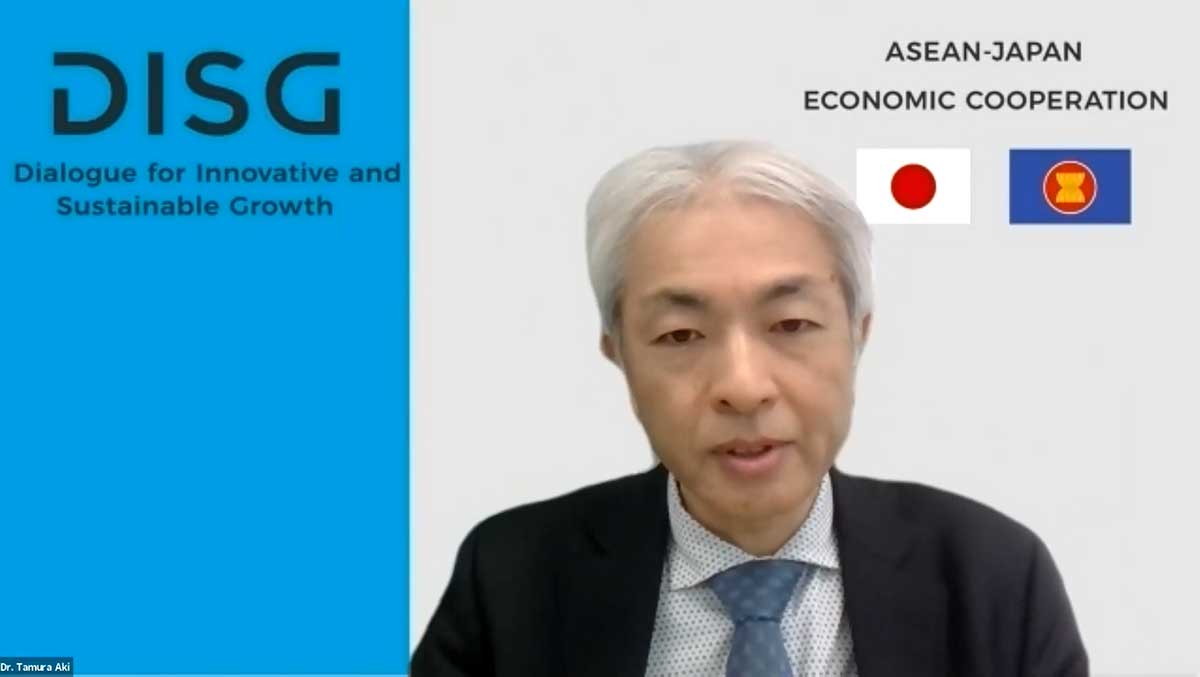
Dr. Tamura Aki, Director-General for Trade Policy, Ministry of Economy, Trade and Industry (METI), Japan shared his experience as the chief negotiator for RCEP on behalf of the Japanese government, and significance of RCEP.
Since 2019, Dr. Tamura has served as the chief negotiator for RCEP and he was a lead of the Japanese government for the final stages of negotiations. Despite the pandemic, the Agreement was signed on November, 2020.
RCEP is one of the world’s largest Economic Partnership Agreement in many aspects with participation from 15 countries: 10 ASEAN member states, Japan, China, Republic of Korea, Australia and New Zealand. The total population, GDP and trade volume of the 15 countries accounts for roughly 30% of the world total. The tariff elimination rate among the countries exceeds 90%. Furthermore, the harmonization of trade rules in the region is expected to facilitate and further promote trade and investment among the region.
As stated in the “Guiding Principles and Objective for Negotiating RCEP”, the RCEP Agreement is a modern, comprehensive, high quality and mutually beneficial agreement that includes areas such as intellectual property, electronic commerce, and competition, which are not covered by existing free trade agreements between ASEAN and the AFP countries. The Agreement will contribute to the establishment of a freer and fairer economic architecture in the region.
When the Agreement was signed in 2020, the world was facing an unprecedented situation brought about by the spread of COVID-19, and protectionist movements were rampant around the globe. Dr. Tamura believes that the signing of the RCEP Agreement at such a time sent out a strong signal to the world that the RCEP countries are committed to supporting open markets, and promoting trade cooperation.
Unfortunately, India, one of the original participants in the negotiations, could not participate in the final signing of the RCEP Agreement. However, at the RCEP Summit in November 2020, the Leaders confirmed in their Joint Statement that the RCEP remains open to India. A ministerial declaration on India's participation in the RCEP was also issued stating the special treatment for India.
The RCEP is a framework that has been promoted underneath the leadership of ASEAN. Japan hopes that RCEP would continue to develop as a regional platform through solid implementation and steady improvement of the Agreement with ‘ASEAN centrality’ being the foundation of the system. Japan will continue to actively cooperate with ASEAN and other RPCs in that direction.
Panel Discussion
Self-introduction and comments to keynote speech

Ms. Anna Robeniol, Director, Market Integration Directorate, the ASEAN Secretariat providing her experiences regarding RCEP negotiations.
Ms. Anna was working as part of ASEAN Secretariat in the debate to consolidate the ASEAN Plus One FTAs and was directly involved in the ASEAN Plus Plus process up to when the RCEP negotiations were launched in 2012. After that she became the lead negotiator on behalf of the Philippines from the 12th round to 24th round of the negotiations. Then, she re-joined the ASEAN Secretariat in 2018 and once again got involved in the RCEP negotiations, not as a negotiator, but someone helping in the negotiations until the signing in November 2020.
Through her experiences not only as the lead negotiator from Philippines but also as a member of ASEAN Secretariat, Ms. Anna has the point of view of Philippines’ national interest, that of ASEAN member states, as well as that of non-ASEAN countries participating in the negotiations.
She commented it is indeed unfortunate that after all those rounds of negotiations, India was not able to join the finish line. However, all is not lost, as the RCEP Agreement remains open to India, should they decide to join anytime.

Dr. Urata Shujiro, Professor Emeritus, Waseda University, sharing his viewpoint on RCEP based on deep insight coming from his research and a lot of discussions with the government officials.
Dr. Urata is a Professor Emeritus at Waseda University who specialised in trade and investment and recently he is working on regional economic integration. He has never been in a government, so he has been looking at the developments concerning regional economic integration, such as the RCEP, from outside the government. However, through his experiences of participation in “Track II” meetings, he learned quite a lot about RCEP and other similar negotiations from talking with the government officials.
Dr. Urata found the Keynote Speech very objective, but at the same time, it brought up very important contributions that the RCEP has made in establishing rules based, fair and free trade environment in Asia.
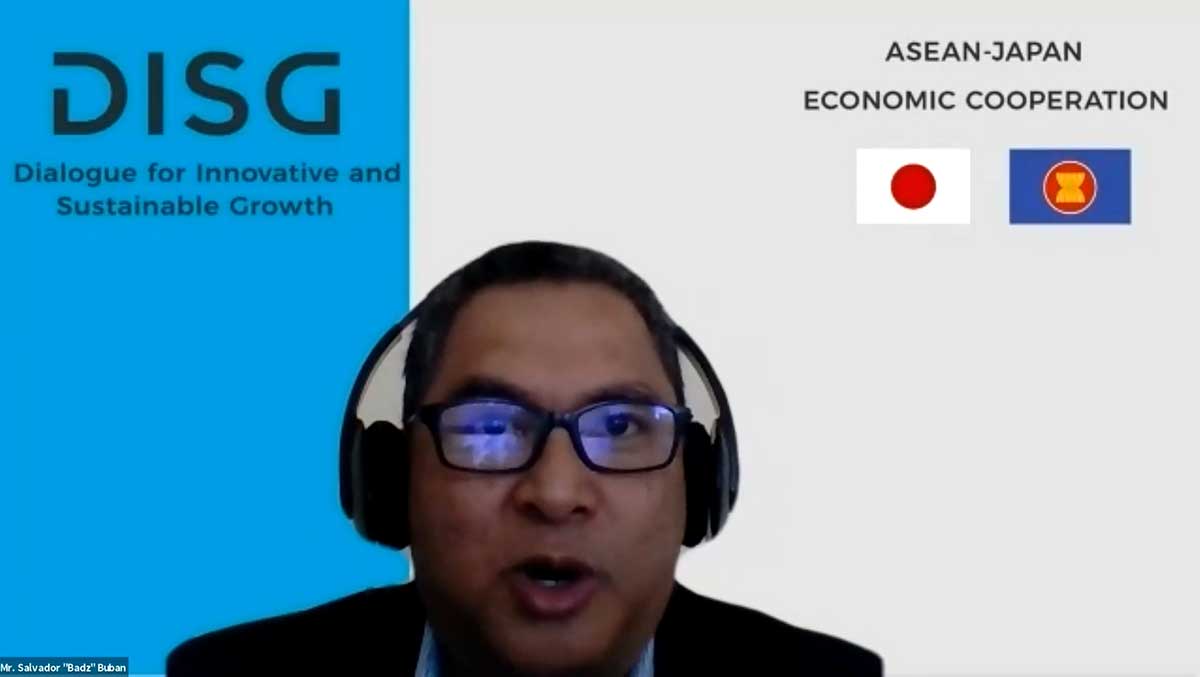
Mr. Salvador Buban, Policy Fellow, Economic Research Institute for ASEAN and East Asia (ERIA), providing his experiences during the RCEP negotiations and perspective on RCEP in regards to Dr. Tamura’s Keynote Speech.
Mr. Buban is a policy fellow of ERIA who specialized in trade policy formulation and negotiations. He has been involved in the negotiations of the various ASEAN Plus Ones, FTAs as either representing the Philippines government, or as an officer of the ASEAN Secretariat. He was involved in the RCEP negotiation since 2017 until the RCEP conclusion and signing in 2020. He provided technical support and advice on key issues especially the rules of origin, provisions and tariff differentials for trading goods. He was the only non-government official who was allowed to participate in the actual RCEP negotiations.
Mr. Buban agreed with Dr. Tamura’s view on the significance and the timing of the RCEP signing especially now that the world is in recovery from the pandemic. Despite difficulties faced, the negotiators continued to persevere, knowing the potential benefits of RCEP to the participating countries individually and to the East Asia as a region. The signatory states of RCEP also keep the door open for India, with the special treatment to be joined at a later stage, which signifies how they recognize India as an original RPC, and its role in the EA region.
From Mr. Buban’s view, it may take a while for India to join, noting the highlighted issues by India during the negotiations. However, he is optimistic that India will join at a later stage, so that the RCEP will be able to have a wider and larger coverage.
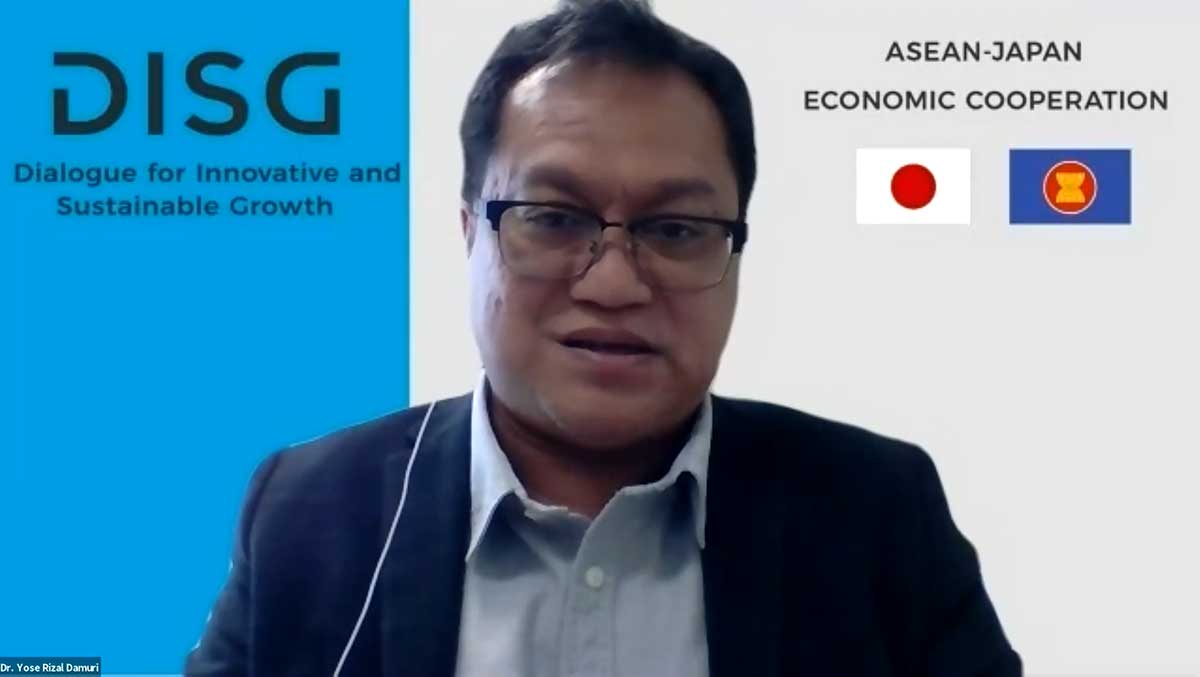
Dr. Yose Rizal Damuri, Head of the Department of Economics, Center for Strategic and International Studies (CSIS), Indonesia, mentioned the RCEP is going to be a game changer for regional integration.
Dr. Damuri is a head of Department of Economic of CSIS Indonesia. CSIS is a policy oriented research institution that pays attention on various issues, including regional integrations, especially the economic aspects.
He has been following the development of the RCEP since the beginning in 2011. He has good relations with the government officials from several countries in ASEAN and through discussions in particular about the developments of the RCEP negotiations. He believes that RCEP is a really big achievement for ASEAN, and also for other countries in the region to come up with mega regional trade agreements.
The RCEP Agreement is going to be a game changer for regional integration in economic aspects. There are many other initiatives in the region, such as the CPTPP (Comprehensive and Progressive Agreement for Trans-Pacific Partnership), where some other countries in the region are involved. The issue is how to make those regional integration initiatives aligned and complementary to each other.
Pillar 1: Background and development of the RCEP negotiations
Background and development of the RCEP negotiations, roles ASEAN and AFPs played
-
Ms. Anna:
Negotiating the RCEP was first proposed by ASEAN back in 2011 during Indonesia's chairmanship and in 2012 the negotiations were launched with the first negotiations commencing around May 2013. Prior to 2011, however, ASEAN was in the middle of an ASEAN Plus Three versus ASEAN Plus Six debate. It can be recorded back to 2009 and 2010. There was a suggestion toward the East Asia vision group for 13 countries to consider establishing the East Asia free trade area, which technically was a logical next step following the ASEAN Plus One FTA with China, Japan and Korea. However, ASEAN also has its own FTAs with Australia, New Zealand and India, consequently Japan proposed the Comprehensive Economic Partnership for East Asia (CEPEA) as an alternative. Eventually, ASEAN decided to work on a set of guidelines for consolidating ASEAN FTAs and whoever wish to join can join. That was the start of the so-called ASEAN Plus Plus process.
The RCEP negotiations were an ASEAN led process. Additionally, it is important to acknowledge the roles that ASEAN and FTA partners played not only for the duration of the negotiations, but also prior to the launch of the RCEP negotiations in 2012. Before the launch the ASEAN Secretariat had worked hand in hand with the AFP (ASEAN FTA Partners) especially with Japan and also Australia to carry out the work that has been mandated particularly in the areas of rules of origin, trade facilitation, economic and technical cooperation, as well as tariff differentials. The mandate was to look into how the ASEAN Plus One FTA can be consolidated in those four areas. At that time, Japan and Australia provided valuable support. The fact that FTA partners in the course of the negotiations help push the bar a bit higher is undeniable. It truly characterizes the RCEP Agreement as a modern, comprehensive, high quality relative to ASEAN Plus One FTAs.
The notion of ‘ASEAN centrality’ regarding the RCEP
-
Dr. Damuri:
According to Dr. Damuri’s opinion, ASEAN Centrality can be interpreted as ASEAN rule as a key regional factor and strategic position to bridge various interests on the way to have a greater regional integration, which was presented very clearly and very strongly in the successful negotiation of the RCEP. ASEAN for example provided necessary elements and infrastructure to start the process, which are the FTAs between ASEAN and its six top trading partners. Without these starting points, RCEP would have to be invented from the scratch, and it would have been more difficult to attain.
ASEAN also provided leadership on the directions and the success of the negotiations.
ASEAN centrality will still play an important role in the implementations of RCEP, and how the RCEP would be directed for the economic integration in the Asia Pacific.
The role Japan played in the RCEP negotiations
-
Dr. Urata:
The idea of ASEAN-based regional economic integration originated from East Asia vision group, which was set up by the President of Republic of Korea in 1997 or 1998 when East Asia was faced with Asian financial crisis, in order not to repeat the crisis. This vision group came up with the idea of the importance of regional cooperation, which is ASEAN Plus Three led by China. Then Japan proposed ASEAN Plus Six, CEPEA. A study group was set up and they came up with proposition to the government, calling for the start of the negotiations. Dr. Urata was a member of both ASEAN Plus Three and ASEAN Plus Six study groups. Many members participated in both frameworks.
China and Japan came up with a joint proposal to start a negotiation of East Asia framework and ASEAN took over the initiatives and ASEAN proposed the RCEP negotiations in 2011.
According to Dr. Urata’s academic point of view, TPP (Trans Pacific Partnership Agreement) played an important role to prompt the RCEP negotiations because TPP negotiations were moving forward. Particularly China and Japan wanted to see some progress in East Asia as well.
Japan made the announcement to join TPP negotiations in March 2013. The first RCEP negotiation began in May 2013. This action of Japan, as per Dr. Urata’s view, played some kind of role to prompt the process.
During the negotiation process, Japan hosted the first intersessional RCEP ministerial meeting in 2018 for the first time outside of ASEAN countries. This is one example of Japan’s contribution for the advancement of the RCEP negotiations.
Academic contribution of ERIA in relation to the RCEP
-
Mr. Buban:
There are two aspects of ERIA involvement and contribution to the RCEP. One is research where ERIA has undertaken studies and analyses of the implication and importance of the RCEP. Second is the technical support provided to the Chair in the RCEP negotiations from 2017 to 2020.
For research aspect, there are two key studies. One is the comprehensive mapping of FTAs in ASEAN and East Asia. It is a bundle of research projects and reports comparing the existing ASEAN Plus One FTAs in terms of the tariff components, commitments, rules of origin, trade and investment. Another one is on ASEAN Plus One FTAs in terms of global value chains in East Asia. These two research projects set out theoretical and empirical backgrounds for the ASEAN, which show that ASEAN Plus One FTAs should form a more extensive and regional economic agreement.
The study revealed that overlapping FTAs in an uncoordinated way may cause higher business and administration costs in implementing these FTAs. The study also pointed out that uncoordinated multiple rules of origin create a burden, and additional cost to the producer, especially if exporting to various markets.
On the technical support, in the actual negotiations, ERIA accepted the request by the Chair of the supervisory board to provide technical support. Mr. Buban attended the negotiations and assisted the Chair in providing advice to address the outstanding issues, especially on rules of origin. In addition, ERIA was involved in the expert working group where they discussed and negotiated the text of the tariff differential provisions in the trading goods.
Pillar 2: Significance of the RCEP Agreement
Significance of the RCEP Agreement and the key benefits to ASEAN Member States
-
Ms. Anna:
The conclusion and the signing of the Agreement demonstrated the ASEAN’s capability to lead and drive negotiations for the mega trade deal that could withstand the challenges. The fact that it happened during the time the world is facing COVID-19 pandemic makes the RCEP Agreement extra special.
RCEP is an FTA comprised of developing and developed countries with various levels of development. RCEP has trade facilitation chapters that go beyond WTO trade facilitation agreement including electronic commerce and investment.
For the benefit, RCEP streamlines the rules so that only a single set of rules will need to be applied to exporters to enjoy tariff preferences. Also, the de-facto FTA creates a rule among those who did not have any FTA between them.
The RCEP Agreement is the region’s biggest contribution on regional effort for the recovery of post pandemic.
Ms. Anna acknowledged the role that Japan played in pushing the bar to a higher level for the RCEP Agreement to go beyond ASEAN Plus One and achieve a modern, comprehensive aAgreement.
Significance of the RCEP Agreement to Japan’s EPA/FTA policies
-
Dr. Urata:
RCEP is a very important FTA for Japan. It provides a free trade agreement between Japan, China and Republic of Korea which greatly contributes to Japan's economic growth. According to a recent estimate made by the Japanese government, the RCEP could increase Japan's GDP by 2.7%.
RCEP established a rule-based, free, fair and open trade system in the Asia region. Especially China’s involvement is very critical as China has issues in their business practices, sometimes called unfair trade practices. But because of the RCEP, China is expected to comply with the rules, which would benefit every party.
RCEP contributes to the fight against protectionism which is growing in the world.
Strategic and geopolitical significance of RCEP Agreement
-
Dr. Damuri:
RCEP will bring more than just economic benefits where it showed that the economies and countries in the East and Southeast Asia are faithful to the principles of open economy and market. Keeping this principle would be much needed in this difficult time.
RCEP highlights the importance of inclusive integrations that involve various participants, even those having different geopolitical perspectives and interests, with a potential to facilitate stability and to maintain peace in the region. Of course, we cannot expect that having economic cooperation will automatically lead to less geopolitical tension but at least the countries can expect that greater economic cooperation eventually will achieve a greater trust as well, by building upon intensive discussion and relations.Greater economic corporations will open opportunity for more sincere dialogue between different and sometimes conflicting interests in the region.
Major outcomes of the RCEP Agreement including the comparison with other FTAs
-
Mr. Buban:
The RCEP, a modern comprehensive agreement, has several provisions that are not present in other ASEAN Plus One FTAs such as e-commerce, government procurement, competition.
It also has the trade facilitation chapter which provides more definitive predictable commitments of each ASEAN Member State as well as each AFP party. It provides predictability and allows changes when it comes to openness and the clearance of goods and embedded trade.
Another significant contribution is consolidating the rules of origin in ASEAN. Although rules of origin are ‘standard procedures’ provisions found in all FTAs, with the RCEP, an exporter will only need to use one set of rules. Now with RCEP there is a single set of rules for 15 parties. That could make RCEP parties easier to comply with the preferential tariff treatment.
ERIA economic analysis highlighted that the economic impact of services sector liberalization and improvement of facilitation are much more significant than the tariff reduction that are offered in other FTAs. This result suggests the importance of the RCEP.
According to research outcome by Dr. Kimura, Chief Economist, ERIA, deepening global value chains innovatively requires mega-FTAs, and ASEAN Member States and dialogue partners should accelerate the implementation of the RCEP.
Pillar 3: Implications and future prospects of the RCEP
The implications and future prospects of the RCEP with regard to the evolving regional economic architecture
-
Dr. Damuri:
Two main trends are actually happening in the regional economic landscape at the moment. The first is the rearrangement of the regional and global supply chains. The post pandemic economic landscape would also need to deal with how to rearrange the regional and global supply chains. The second is the growing importance of digital economy. The pandemic era makes us realize that there are many things where we can use digital technology platforms.
Appropriate fundamental framework is needed to provide necessary rules and principles to make the benefit of those two trends become more sustainable, and also inclusive. And the RCEP is a starting point to discuss these two matters for the future economic landscape.
On the supply chain perspective, including India in the RCEP Agreement will facilitate more transition as India has strong presence in digital technologies.
The RCEP needs to consider discussing the future trends including how to set up rules on cross border e-commerce and many other 21st century issues.
The RCEP needs to consider the expansion of its memberships by including those countries and economies across the Pacific Ocean
Possible ASEAN-Japan cooperation toward ensuring the RCEP Agreement a success
-
Dr. Urata:
Ideally, it would be great to have a rules-based free and fair open trade system on a worldwide basis. WTO is not really functioning as we expected, as a result, we are taking regional framework, in which the RCEP plays a very important role in setting up a rules-based system.
The next step may be to broaden or expand the regional framework to include Asia Pacific or Indo-Pacific. There are already existing frameworks such as CPTPP and Free and Open Indo-Pacific. These frameworks should be extended to include Europe because European countries are very much interested in regional affairs in Asia in recent years.
According to Dr. Urata, the leadership role of both Japan and ASEAN in expanding membership to cover whole world would be substantial along with formulation of strategies and objectives.
Scope for organizational contribution by ERIA
-
Mr. Buban
Conducting research and analysis of the economic implications of the RCEP examining commitments in the agreement and comparing with other agreements of how the RCEP could further be improved. ERIA also looks into assessing the impact of the RCEP.
ERIA could look into the built-in agenda, and see how ERIA could contribute on that because these are the ideas that would not be agreed during the negotiations.
ERIA can provide technical support, research and analysis that would actually put lead into the built-in agenda that could be discussed.
ERIA has been conducting capacity building activities to ASEAN including e-commerce, especially for CLM (Cambodia, Laos and Myanmar) countries.
For 2021, ERIA is exploring to conduct the training on the RCEP rules of origin for government officials in Cambodia and Laos, through the capacity building program for CLM.
Possible ASEAN-Japan cooperation regarding RCEP and expectations for ASEAN-Japan economic relationship
-
Ms. Anna:
ASEAN and Japan have responded to the crisis with the adoption of the ASEAN Japan Economic Resilience Action Plan by ASEAN Economic Ministers and Minister of Economy, Trade and Industry (AEM-METI). It aims to sustain the close economic ties developed by ASEAN and Japan, mitigate the adverse impact of COVID-19 on the economy and strengthen economic resilience in response to the economic challenges brought about by the pandemic.
ASEAN and Japan renewed the 10 year Strategic Economic Cooperation Roadmap, which will be implemented up to 2025 which is currently the cornerstone of a strong ASEAN and Japan relationship.
Recently, Japan proposed to start a conversation on pathways towards future decarbonized societies, and the possible adoption of ASEAN Japan joint initiatives to strengthen the ASEAN and Japan cooperation in the green recovery. The green recovery is one area that ASEAN and Japan can pursue to enhance economic relationship in the future. With both RCEP and AJCEP, having robust EcoTech provisions, clearly ASEAN and Japan have two platforms to deepen and broaden their economic relations which would benefit not only both sides, but the entire region as well. Through such development provided by both platforms, ASEAN and Japan can work together to ensure that everyone benefits from the bilateral relationship, either to AJCEP or RCEP, and leaving no one behind.
ASEAN and Japan could also closely collaborate towards having a stronger and louder voice in the multilateral trading setting particularly on those 21st century issues that have mentioned earlier, those that are trying to find their way into the WTO, for instance. This may entail a lot of engagement, in this regard forums such as DISG could really be useful to achieve those objectives.
Final remarks and expectation
Expectation for ASEAN-Japan cooperation regarding the RCEP Agreement
-
Ms. Anna
For ASEAN, Japan will always be an important trading and development partner, and this partnership will play an important role not only in ensuring the success of AJCEP but also RCEP. -
Dr. Urata
Looking forward to a further collaboration between ASEAN and Japan. -
Mr. Buban
Last year, the economic ministers of ASEAN and Japan’s METI adopted the ASEAN and Japan Economic Resilience Action Plan, and there is the initiative for simplifying and streamlining of non-tariff measures. Such measures could be important elements and would complement the RCEP. This cooperation would flourish the future of the region. -
Dr. Damuri
Although the RCEP is a big achievement for ASEAN and Japan, many other greater cooperation is needed on various other aspects, such as improving connectivity, developing human capital, or even promoting sustainable and green developments. In this context, Dr. Damuri indicated that DISG is a very good platform to learn to each other, and push forward greater cooperation.



